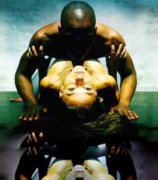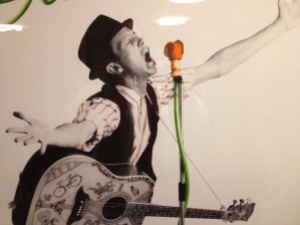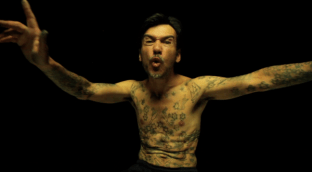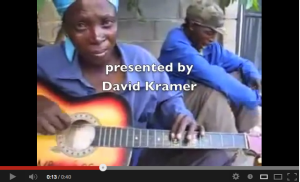
Ferial Essa has more than one reason to welcome the sighting of the new moon that will mark the end of Ramadan. She will be taking a friend to see Sadako, the “exquisite” Bunraku puppet show at the Baxter. The UCT graduate’s name was drawn out of a hat and the 22-year-old who “loves food and fast cars” said she was over the moon to have been chosen.
Thank you to everyone else who entered! Keep an eye on www.CallOffTheSearch.com as we are planning to give things away more than once in a blue moon.
Poetry and puppetry
“My fest favourite … a human story that goes straight for the heart.” Kgomotso Moncho, The Star Tonight
“… clarity of vision and intent that is rare, an exquisitely moving true fable … adults can still be transfixed by a powerful yarn that appeals to our inner child.” Christine Kennedy, CUE
Set in Japan, Sadako has been described as a gently poetic story, a breath of fresh air in complicated times. “It proves that adults can still be transfixed by a solid, powerful yarn that appeals to our inner child.
“Sadako Sasaki was two years old when the atom bomb was dropped on her hometown, Hiroshima, on the 6 August 1945. She survived one of modern history’s most devastating events only to die 10 years later from what was then known as “the atom bomb disease”, leukemia.
“During her illness, she began folding origami paper cranes, evoking the Japanese legend that says if you fold one thousand cranes, you will be granted a wish. Sadako’s first wishes of health and long life were not granted. The play Sadako is a call to audiences to honour her final wish for peace in our world.
“Sadako’s experience transcends culture and period; she speaks to a young person’s anxiety of growing up in a world where young people must contend with the consequences of the actions of adults. This story of hope in the face of devastating tragedy is a universal one.
 “Sadako plays with notions of innocence and childhood and has that quality that makes the best children’s literature classic: it treats childhood as an aspect of adulthood.
“Sadako plays with notions of innocence and childhood and has that quality that makes the best children’s literature classic: it treats childhood as an aspect of adulthood.
“Hearts & Eyes Theatre Collective have created a play based on the story of a remarkable child whose courage, hope and determination fires the imagination and uplifts people of all ages. Using Bunraku puppets designed by 2010 Standard Bank Young Artist Janni Younge, the production is one of utter magic and magnificence.”
Sadako is created by Peter Hayes and directed by Jaqueline Dommisse. The production combines video projection, puppets and live actors to tell the story of Sadako Sasaki and the legend of one thousand paper cranes.
With Roshina Ratnam as Sadako; and Lee-Ann van Rooi, Jason Potgieter, Gabriel Marchand, Pascale Neuschäfer, Asanda Ritityana and Merryn Carver.
Lighting is by Paul Abrams, sound design by James Webb, costumes by Hillette Stapelberg, set design by Illke Louw and puppet design by Janni Younge.
Baxter Flipside, 30 July until 10 August 2013. Booking through Computicket.
What we saw before …
Mies Julie home after knock-out tour
 sold-out runs in New York and London, Yael Farber’s sensational production of Mies Julie returns for a short run at the Baxter Theatre in Cape Town before heading to Ireland, the next leg of its world tour.
sold-out runs in New York and London, Yael Farber’s sensational production of Mies Julie returns for a short run at the Baxter Theatre in Cape Town before heading to Ireland, the next leg of its world tour.
In a post-apartheid kitchen – a potent convergence point of domination, domestic practicality and untenable sadness – a single night, both brutal and tender, unfolds between a black farm labourer, the daughter of his ‘master’ and the woman who raised them both.
With 26 5-star reviews from around the world, it may be worth killing for a ticket … or just book one at Computicket.
From Long Street, the classics!
(May 5 2013) I couldn’t help thinking there must have been an eerie emptiness on Long Street tonight, with so many of its clichés and classic characters on stage at the Baxter.
In Long Street Nights, Nicky Rebelo directs a brilliant cast of young, raw talent from diverse cultural backgrounds: Thami Mbongo, Thando Doni, Riana Alfreds, Daneel van der Walt, Natasha Dryden and Antonio Fisher. Design and lighting is by Patrick Curtis.
Each of the characters resonated with an authenticity that made me feel as if I knew them. They seemed to be the very people I have observed as I have tottered tipsily along the Mother City’s party street, kept upright by its apparently never-ending stream of the smart and the seedy.

- Catherine (Daneel van der Walt), the desperate, dried up old karaoke DJ
- Jasmine (Riana Alfreds), a single mother and businesswoman with a dodgy international ‘courier business’
- Mia (Natasha Dryden), a wild and headstrong girl (and soon-to-be e-bunny) with dilated pupils and a prematurely cynical soul
- Duma (Thami Mbongo), a young politician and tenderpreneur with a chip on his shoulder
- Sizwe (Thando Doni), a naïve young man from the Eastern Cape who walks the walk and wears the flares but is totally out of his depth as he searches bars and restaurants for ‘his future’, which he is sure will come in the form of a beautiful white woman
- Fabian (Antonio Fisher), a sensitive barman with fantasies of being a rent boy

The play was created from the street up through a process of workshopping that imbues the performances with an extraordinary honesty and rawness. Reviving the legacy of the late, great Barney Simon, the company spent two weeks workshopping the play by exploring Long Street until the early hours of the morning. They soaked up the vibrant, pulsating rhythm of Cape Town’s iconic playground and cooked up characters from the clichés and archetypes that make up the unique flavour of Long Street.
Simon, the co-founder and artistic director of Johannesburg’s Market Theatre from the late 70s to late 80s, was responsible for some of the strongest stage work produced in South Africa, including Cincinnati, Black Dog, Inj’emnjama, Score Me the Ages and Born in the RSA. The Baxter is reviving the tradition with this production under the steady hand of writer/director Rebelo, who worked closely with Simon on the workshopped production Outers in 1985.
 How we laughed – at them, and at ourselves.
How we laughed – at them, and at ourselves.
That’s it, I am off … to Long Street!
Booking is through Computicket on 0861 915 8000, on-line at www.computicket.co.za or at any Shoprite Checkers outlet.
Convicts, gangsters, tattoos … what’s not to like?
(April 11 2013) I have decided to defy my bail conditions to sneak down to the Baxter tonight to see Rooiland’s Cape Town debut. A hit at last year’s KKNK’s festival, Tertius Kapp’s gritty play about life in prison will be raising the stakes (and hopefully lowering the tone a little) at the Baxter’s Flipside from 11 to 27 April.
Directed by the much-lauded Jaco Bouwer, Rooiland “tells the stories of personal battles which prison gangs encounter on a day-to-day basis, and the conflicts that arise among these groups”.
 The grim realities of prison life and the shared history of four gang members (Wilhelm van der Walt, Charlton George, Brendon Daniels and Leon Kruger) become weapons and shields as each struggles for private space in a cramped cell.
The grim realities of prison life and the shared history of four gang members (Wilhelm van der Walt, Charlton George, Brendon Daniels and Leon Kruger) become weapons and shields as each struggles for private space in a cramped cell.
The production is performed in Afrikaans and Pomobasa (prison language … who knew?) and there is an age restriction of 18 and above.
Bookings is through Computicket on 0861 915 8000 or at any Shoprite Checkers outlet
What the Press had to say:
Marina Nel: Every aspect of Rooiland is masterly. The authentic and scary text by Tertius Kapp, Jaco Bouwer’s thoughtful directing and creative design, Braam du Toit’s resonating music and the four undaunted actors that individually deliver the best acting of their lives.
Wayne Muller: When it comes to theatre where pieces grabs you by the neck and shocks you with reality, Tertius Kapp’s Rooiland definitely counts under the best of productions. It works together with a reality that might be removed far away from the audience, but at the end the given is so relevant that it feels like you are trapped in the prison cell next door.
David Kramer is a genius

(January 10 2013) You couldn’t make him up. In fact, you couldn’t make up any one of the fantastically eccentric crew he has assembled for Kalahari Karoo Blues, a very special little jig of a show.
In this exclusive concert for the Baxter in Cape Town, the evergreen South African showman explores the connections between ancient and modern stringed instruments as he presents quirky, sometimes ancient musical styles from the far corners of Southern Africa – the Kalahari, the Hardeveld and the Klein Karoo.
A motley crew of uniquely talented musicians from around Southern Africa – from Oteng Piet and his one-stringed Kalahari ‘segaba’, the upside-down guitar style of Ronnie Moipolai and the handmade fenjoro violin of Babsi Barolong to the incredible teaspoon slide-playing of Hannes Coetzee – amaze and delight, as evidenced by sporadic standing ovations.
It is always nice when audience members spring out of their seats in appreciation but one might expect the other musicians to sit still in quiet appreciation while the others took their turn. But, hell, no! The sideshow of spirited, often competitive dancing among the ‘resting’ musicians threatened to become the main show at times.
Not even those who appeared to be as old as the hills (and there were a few, with at least one octogenarian) could ignore the beat driving them out of their seats and into all sorts of foot stomping and hip thrusting.
Ronnie Moipolai set the house on fire with his crazy, upside-down left hand “katara” styling and his flamboyant bass-string technique. Just when you thought it couldn’t get any more spectacular he lifted his instrument behind his head, rested it on his shoulders and continued playing.
Like Hannes Coetzee, Ronnie is a YouTube cult figure, but this is his first actual performance outside of Botswana.
Hannes Coetzee developed a style where he holds a teaspoon in his mouth to play a melody while his fingers pluck and strum away. Why, you might ask. He wanted to be an orchestra, of course. His YouTube fame caught the attention of the Grammy Award-winning Carolina Chocolate Drops, and they will soon release one of his songs.
Continuing to explore the connection between ancient and modern instruments and styles, the show included Mary Kriel, a folksinger from Vredendal, who accompanies herself with a coffee tin, and the Sonskynsusters, who have performed with Kramer on many occasions.
In the tradition of folk music Kramer takes a bit from here and a bit from there, mixes it up, tones it down, turns it up, adds some honey, whatever takes his fancy.
Apart from being a showcase for extraordinary talent and a foot-stomping blast the show reminded us all of our oneness as people, Africans, listeners, dancers, rivals, you name it: we are all different and we are all the same.
It also made me feel very glad and proud to be home. In the words of Anne Taylor, “David Kramer’s absolutely soaring show, Kalahari Karoo Blues, will remind you why you couldn’t possibly live anywhere else but in this land of unexpected genius and overflowing sincerity.”
The evening had started (appropriately theatrically, I thought) with a glass of sparkling shiraz from Solms Delta wine estate. I found this sparkling to be surprisingly pleasing although my date thought it tasted like a red wine spritzer (you draw your own conclusions about who has the more sophisticated palate). She opted for the rosé, which was deemed decidedly quaffable. My personal favourite was the Amelie, a dry white Rhone-style blend.
There is something special going on at the Baxter … as usual … but this time it is for just 9 days: Kalahari Karoo Blues, 9-19 January 2013 at 8pm. Book through Computicket
2012:
An ‘exquisitely embroidered’ tale
 The devastating and beautiful Die Naaimasjien (The Sewing Machine), starring the incomparable Sandra Prinsloo is back … and this time it is in English!
The devastating and beautiful Die Naaimasjien (The Sewing Machine), starring the incomparable Sandra Prinsloo is back … and this time it is in English!
This one-woman show introduces us to the 82-year-old Magdaleen who is preparing to say goodbye to her sewing machine, her constant companion for more than 55 years.
In the words of Marianne Thamm: ‘Acclaimed writer Rachelle Greeff’s first stage work is the literary equivalent of an exquisite piece of embroidery. It is a simple but deeply touching story of motherhood, loss, ageing and letting go, all told by one of the finest stage divas in the country.’
I was blown away by the Afrikaans version and bow down before Sandra Prinsloo at any opportunity, but Fahiem at the Baxter tells me that this veritable feast is not all. Cape audiences are in for one hellova treat, a double portion, he says. The Sewing Machine is being presented alongside a second Edinburgh Fringe Festival hit show from these shores, Normality with Pedro Kruger.
Presented by Hennie van Greunen of Wordsmith’s Theatre Factory, one of the most successful Afrikaans theatre companies in South Africa, the two productions will run in repertoire with performances on alternate nights at the Baxter Golden Arrow Studio.
Fresh from its success at the Edinburgh Fringe Festival’s South African season, the English version of Rachelle Greef’s mega hit play, Die Naaimasjien, winner of four major theatre awards, comes home to have its national debut in English. Translated and directed by Hennie van Greunen it received rave reviews, (with five-star nods) and played to sold-out audiences at the prestigious festival in Scotland in August.
Four years after she started playing Magdaleen and 250 performances later, Sandra Prinsloo, the darling of South African theatre, entrances audiences as she breathes exquisite life into the frail but feisty character.
The play won the Nagtegaal Playwright’s Competition award when it opened in March 2009 and went on to win two Fleur du Cap awards (Best Performance by an Actress and Best New South African Script).
 Normality is Hennie van Greunen’s inspiring one-hander which stars the acclaimed entertainer and actor Pedro Kruger, directed by Shirley Ellis. At the 2009 Edinburgh Fringe Festival, Normality received five 5-star reviews as well as thefringereview.com Hidden Gem award.
Normality is Hennie van Greunen’s inspiring one-hander which stars the acclaimed entertainer and actor Pedro Kruger, directed by Shirley Ellis. At the 2009 Edinburgh Fringe Festival, Normality received five 5-star reviews as well as thefringereview.com Hidden Gem award.
The Stage summed it: “This brilliantly realised multi-layered production plays deftly with our perception of normality while managing to be rippingly entertaining.” Fringereview.com praised it by saying, “It’s an outstanding work, and well worth five stars”, and Fringeguru.com said “Expect to be challenged – expect to be uplifted – expect to be changed” The British Theatre Guide agreed, “Wickedly funny, raw and entirely real, this beautifully performed and brilliantly realised monologue is a remarkable piece of theatre.”
After its run at the Baxter Normality will transfer to New York (42nd Street, Broadway) to participate in the United Solo Festival, a festival of one-person theatre.
Booking through Computicket on 0861 915 8000, online at www.computicket.co.za or at any Shoprite Checkers outlet
The Sewing Machine will be performed at 7pm on 23, 24 October and 2, 3, 6, 8, 9 and 10 November and at 3pm on 4 November
Normality will be performed at 7pm on 17, 19, 20, 26, 27, 30 and 31 October and at 3pm on 21 and 28 October
Ticket prices are R95, and R160 for both productions.
What they said about Die Naaimasjien:
‘I struggle to find words to describe this tour de force, except perhaps: Bravo! Bravo! Bravo!’ –Deborah Steinmair
‘… created, edited, rehearsed and delivered in such a way as to touch the soul of every person in the theatre.’ – Paul Boekkooi
‘Magdaleen shuts the wooden lid on her faithful confidante – precious, closer than a friend – for that last time, as they both prepare to move into their next worlds. Having been privy to her memories, my sense of her loss(es) is so great it moves me to streams of tears.’ – Fiona Gordon
What the UK media said about The Sewing Machine
This is a very powerful piece of drama that seems to have made the transition to another language and another culture whilst losing none of its original power. See it, whatever your age.” – FringeReview
“The Sewing Machine is a powerful drama and Prinsloo brings us an entirely believable elderly frail woman.” – FringeReview
“This is an extraordinarily moving and affecting piece of theater that is loaded with quiet strength in both the words and in the performance.” – Edinburgh Guide
“Sandra Prinsloo does a magnificent job playing the octogenarian, Magdaleen” – The Stage
“Entrancing performance” – The Stage
“A fine performance” – The Independent
“A must-see, truly’ – The Observer
“Delicate, understated one-woman show” – Telegraph
“Supremely touching” – Telegraph
“Prinsloo’s naturalistic, beautifully restrained performance” – Telegraph
“Cleverly and compassionately brought to life by leading South African actress Sandra Prinsloo” – The Scotsman
What the UK media had to say about Normality
‘…is angry and funny, romantic and sad…’ – The Scotsman
‘Wickedly funny, raw and entirely real, this beautifully performed and brilliantly realised monologue is a remarkable piece of theatre.’ – The British Theatre Guide
“Solo Performer Pedro Kruger is utterly mesmerising” – The British Theatre Guide
“This play is sensational on every count, immaculately written, acted and directed, Shirley Ellis has weaved a tight little production that effectively uses costumes, music and lighting to create quite possibly the best show at the Fringe.” – hairline.org.uk
“All this is helped by Hennie van Greunen’s sparkling script and Shirley Ellis’ sympathetic direction – and the fact that Pedro Kruger is an accomplished all-round performer” – The Stage
Dates and Times:
23, 24 October, 2, 3, 6, 7, 9, 10 November at 19:00
Sunday 4 November at 15:00
Standing, clapping and crying … again
 I am getting used to being part of tearful standing ovations at the Baxter. After Waiting for the Barbarians it was Athol Fugard’s classic masterpiece Boesman and Lena that had me standing up and breaking down (or something like that…)
I am getting used to being part of tearful standing ovations at the Baxter. After Waiting for the Barbarians it was Athol Fugard’s classic masterpiece Boesman and Lena that had me standing up and breaking down (or something like that…)
Acclaimed stage and television actor, writer and director Ncgobo subtly shifts the dynamic and explores how the tale is relevant to South Africa today. Quanita Adams is a passionately dominant as Lena and Elton Landrew is excellent as her distant, angry partner and tormentor Boesman. Under Ncgobo’s direction Charly Azade’s Outa feels like a truly contemporary figure as he speaks a modern if slightly confusing mix of French and Swahili.
Following a very successful run in Johannesburg the show is on at the Baxter Golden Arrow Studio until September 29.
Booking through Computicket on 0861 915 8000 or online at www.baxter.co.za
Athol Fugard The Great
This is a fitting tribute to the man Time magazine described as the greatest active playwright in the English-speaking world. Fugard, who celebrated his 80th birthday on June 11, has written nearly 40 plays and is still working.
The screen-adaptation of his novel Tsotsi (directed by Gavin Hood) won an Academy Award in 2005. Last year he was honoured with a Tony Lifetime Achievement Award for his contribution to international theatre.
Although 17 of his plays have been staged at the Baxter, several of them more than once, this is the first time that Boesman and Lena is showcased here.
“It is wonderful news about Boesman and Lena at the Baxter. I have heard and read a lot about this production,” said a very happy Fugard. “The decision to put this production on a Baxter stage is quite simply one of the best birthday presents I have received in my 80th year. I am truly very thrilled!”
Boesman and Lena premiered in Grahamstown in 1969 starring the author himself and Yvonne Bryceland in the lead roles. The story was inspired by an incident in 1965 when Fugard was driving in rural Eastern Cape. He stopped to offer a lift to an elderly lady he saw walking in the middle of nowhere in the scorching sun. Overcome with gratitude, she burst into tears as she told him that her husband had just died and she was walking to another farm. If Fugard hadn’t stopped, she would probably have spent the night on the side of the road. It was a common practice in apartheid South Africa for farmers to evict the family once a worker had died.
There have been two film adaptations – one directed by South African Ross Devenish in 1974, starring Fugard and Bryceland, and the other directed by John Berry in 2000, starring Danny Glover and Angela Basset. ABC Television described it best, saying “Athol Fugard, the South African playwright, has written some fine plays, but certainly none better than the amazing Boesman and Lena, which is great; absolutely superb.”
What the media said
“The production sparkles with power and insight” Peter Feldman, Artspoken and Reviews
“It’s superb theatre” Jenny de Klerk, artslink.co.za
“Fugard classic still delivers a powerful message” Robyn Sassen, Times Live
“The productions zings with energetic invention” Adrienne Sichel, The Star Tonight
“Fugard’s words remain as powerful as ever” Arja Salafranca, The Sunday Independent
“This remarkable play by Athol Fugard has truly stood the test of time.” Jenny de Klerk, Saturday Star
Ncgobo’s numerous stage and television roles include productions of Waiting for Godot, Talk Radio, Play it Again Sam and Happy Natives. Last year he directed another Fugard classic, Master Harold … and the Boys, and most recently his The Suitcase opened at the new Soweto Theatre.
Triple Fleur du Cap award-winner Quanita Adams has wowed audiences with her performances in At her Feet, Cissie, Fugard’s Valley Song and Truth in Translation.
Elton Landrew is best known for his roles in the David Kramer and Taliep Petersen hit shows District Six: The Musical and Kat and the Kings.
DRC-born, Belgium-raised Charly Azade has appeared in the television series Scandal!
Production design is by Nadya Cohen with costumes by Thando Lobese and original lighting by Oliver Hauser.
Waiting for the Barbarians: a dream of a nightmare
Review: Alex Dodd
 World premiere of South African-born Nobel laureate JM Coetzee’s novel Waiting for the Barbarians, adapted for the stage and directed by Alexandre Marine, at the Golden Arrow Studio at the Baxter from 16 August to 1 September (just two weeks!)
World premiere of South African-born Nobel laureate JM Coetzee’s novel Waiting for the Barbarians, adapted for the stage and directed by Alexandre Marine, at the Golden Arrow Studio at the Baxter from 16 August to 1 September (just two weeks!)
Watching the play was a bit like being seized by the scruff of the neck and vigorously shaken in a darkened room, before being released back into the world again. The constrictive intimacy of the small theatre added to the intensity of the viewing experience. The sheer proximity of the actors’ bodies seemed to violate the boundary between the action on stage and the reception of it, rendering crucial notions of complicity in human rights abuses that much more intimate and inescapable. Being in the audience, it felt like you were part of the state of emergency that was unfolding on the stage – not safely sealed off from it. Even if just a witness, you were somehow embroiled in the action or tainted by it as it unfurled. The wrongness seemed to be speaking through everybody present – actors and audience alike.
The intensely embodied physical performances also gave a pulsing flesh-and-blood kind of immediacy to the mood of psycho-sexual perversity that proliferates in the town under the imperial order. The bed on which the whore opens herself to the magistrate is positioned at the very limits of the stage, so the audience witnesses the shuddering flesh of her thighs at thrilling and disturbing close quarters.
The costumes are stark, graphic and archetypical, entirely befitting of a dark postmodern parable that transcends historic and geographic contingency. The canvas rags in which the barbarian girl is swathed are in stark contrast to the dashing regalia of the soldiers of the Third Bureau and the camouflage uniforms worn by the special forces of the Empire. In this sense, the costumes become a subtle visual signifier of the extreme divisiveness of the binary state inscribed by the imperial order.
The staging, too, does justice to Coetzee’s originating text. The sets were designed by Craig Leo, who was also invented the sets for Neo Muyanga’s recent shape-shifting maskanda operetta, The Flower of Shembe. The stage is divided up by an interlocking series of semi-translucent screens. These screens are painted with abstract landscapes and spattered with mud, which is at times wiped away to reveal aspects of the action that takes place in the darkened hinterland at the back of the stage. The ingenuity of these screens is that the most extreme acts of violence and torture happen behind them. Conjured by noise, shadow and the spoken word, the violence is always only an intimation, a report or a rumour made real by the inevitable completion of dark imagining. This violence in absentia reflects not only the political reality of states of emergency but also the formal poetics of withholding in Coetzee’s writing.
Waiting for the Barbarians was first published in 1980. At that time, internal resistance to apartheid was becoming more effective and militarized, and state organisations were responding with repression and violence.
It was like living a nightmare to watch the premiere of the stage adaptation 32 years later on the same day that 34 people were killed and 78 injured when South African police with automatic rifles, pistols and shotguns opened fire on strikers at the Lonmin platinum mine in Marikana. This is the most extreme instance of police brutality to have taken place since South Africa’s transition to so-called ‘democracy’ in 1994, and recalls the massacres that took place under apartheid. Against this contemporary backdrop of violent state repression, Coetzee’s text seems to be outside of history and, at the same time, like a surveillance device locked inside of it.
Booking: Computicket tel 0861 915 8000 or online at www.computicket.co.za
Cape Town-born JM Coetzee won the Nobel Prize for Literature in 2003. Waiting for the Barbarians is his third novel, which was published in 1980 and was chosen by Penguin as one of the Great Books of the 20th century
Producer Maurice Podbrey returned to South Africa 14 years ago from Canada, where he had a distinguished theatrical career and was awarded the Order of Canada. On his return he formed the Mopo Cultural Trust, which has as its mission the development of new theatrical talent. Other works produced by Podbrey include Tshepang (which has toured extensively and has been translated into Afrikaans and Zulu), A Plague of Heroes, Copenhagen, Things are Bad and Did We Dance: Ukutshona ko Mendi (The Sinking of the Mendi)
Director Alexandre (Sasha) Marine is the recipient of the Distinguished Artist of Russia award, founding member of the Tabakov Theatre in Moscow and founding artistic director of Théâtre Deuxième Réalité in Montreal
Cast: Grant Swanby, Nicholas Pauling, Chuma Sopotela, Owen Manamela-Mogane, Chi Mhende, Alistair Moulton Black, Ruben Engel and Anele Situlweni
Set and costume design: Craig Leo
Musical score: Dmitri Marine
Media enquiries, interview or picture requests: Fahiem Stellenboom on 021 680 3971 or email [email protected] or Ally Patterson on 021680 3974 or [email protected]






Mies Julie is one of those “must-see” pieces of theatre: incredibly raw and powerful, it explores the ways that the pain of South Africa’s past stalks us each and every day. Uncomfortable, riveting, almost brutally erotic in places, in spite of itself. See it.